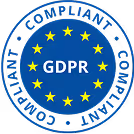AI Transparency & Compliance
Version: 1.0
Last updated: 12.02.2025
1. overview and purpose
Purpose:
This statement describes how the Notes Auditor uses artificial intelligence (AI) to support audit processes, explains its functionality and limitations and defines the responsibilities of users. It serves to ensure transparency, build trust and support auditors in complying with the EU AI Act and other relevant regulations.
Scope:
The Notes Auditor uses AI as a support tool with limited risk for auditing notes, management reports and sustainability reports. The results are advisory in nature and must be validated by qualified professionals.
2 AI Functionality and Role in the Audit Process
How AI Is Used:
- Data Analysis & Validation: AI automates data validation and cross-references financial figures, flagging discrepancies and suggesting supporting evidence.
- Checklist Support: By learning from previous audits, the AI proposes checklist responses and recommends relevant references.
- Version Control & Change Tracking: All AI contributions-including document version comparisons and change logs-are transparently recorded.
- Numerical Processing: The system identifies key financial figures with a reported accuracy of 97.4% and processes bulk numerical data while highlighting any inconsistencies.
- Compliance Risk Identification: AI conducts preliminary analysis of management reports to detect potential compliance risks and identify missing disclosures.
- Document Continuity: It supports audit continuity by automatically rolling forward references and establishing cross-document linkages.
Designation as Limited-Risk:
In accordance with the EU AI Act's risk-based framework, Notes Auditor's AI functionalities are categorized as "limited-risk" tools. They are designed to support, not replace, human decision-making in the audit process.
3 Transparency, Limitations, and User Responsibilities
Transparency Measures:
- Visual Indicators: All AI-generated content is highlighted in yellow within the application.
- Audit trails: The system maintains detailed logs of AI decisions, data sources, and any subsequent human modifications.
- Regular updates: The AI model and its underlying datasets are periodically updated to reflect new information, audit trends, and evolving regulations.
Limitations:
- Advisory Nature: AI-generated proposals are based on pattern recognition, historical audit data, and predefined datasets. They are advisory only and may not capture every regulatory nuance.
- Data & Algorithmic Limitations: Despite a high accuracy rate, the AI system may not fully adapt to unique or evolving regulatory requirements. It is not a substitute for professional judgment.
- Bias & Errors: Users should be aware of potential biases or errors inherent in any automated system. All AI outputs must be independently verified against current regulations and professional standards.
User Responsibilities:
- Critical Review: Auditors must critically review all AI-generated content, validate findings, and document any discrepancies.
- Compliance Verification: Users must ensure that their final audit reports adhere to the latest local and international standards and regulations.
- Feedback: Users are encouraged to report any inaccuracies or limitations observed in AI-generated outputs to support continuous improvement.
4. human oversight and accountability
- Human-in-the-loop: AI supports human experts, but does not replace them. The final responsibility remains with the inspectors.
- Accountability: Any decisions based on AI-generated content are subject to human review, and the final audit output is solely the responsibility of the auditor.
- Risk mitigation: Users are advised to follow established risk management protocols and to seek additional guidance when the AI outputs raise potential compliance issues.
5 User Notification and Support
Helpand Documentation:
- Help Section: Detailed documentation is available within the application, explaining AI functionalities, limitations, and proper usage guidelines.
- Online Resource: Visit yourcompany.com/ai-info for comprehensive details on the AI system, including training data sources, update logs, and compliance measures.
- Support Contact: For further assistance or to report concerns, please contact our support team at support@dnl.ai.
6. compliance with the EU AI Act and Other Regulations
Notes Auditor's development and deployment of AI functionalities adhere to the principles set out by the EU AI Act, including:
- Risk Assessment: Regular assessments to ensure the AI system remains within the defined "limited-risk" category.
- Transparency Requirements: Clear communication regarding the role of AI and its limitations.
- Human Oversight: Mandating human review of AI-generated outputs to ensure accountability and adherence to professional standards.
Auditors and users are reminded that continuous review of AI performance and adherence to updated regulations is essential. This statement will be revised as necessary to reflect regulatory changes and improvements in AI capabilities.
By using the Notes Auditor, you confirm that you have read, understood and accepted the AI Transparency and Compliance Statement above. Your continued feedback is critical to maintaining the reliability and integrity of our AI systems.


